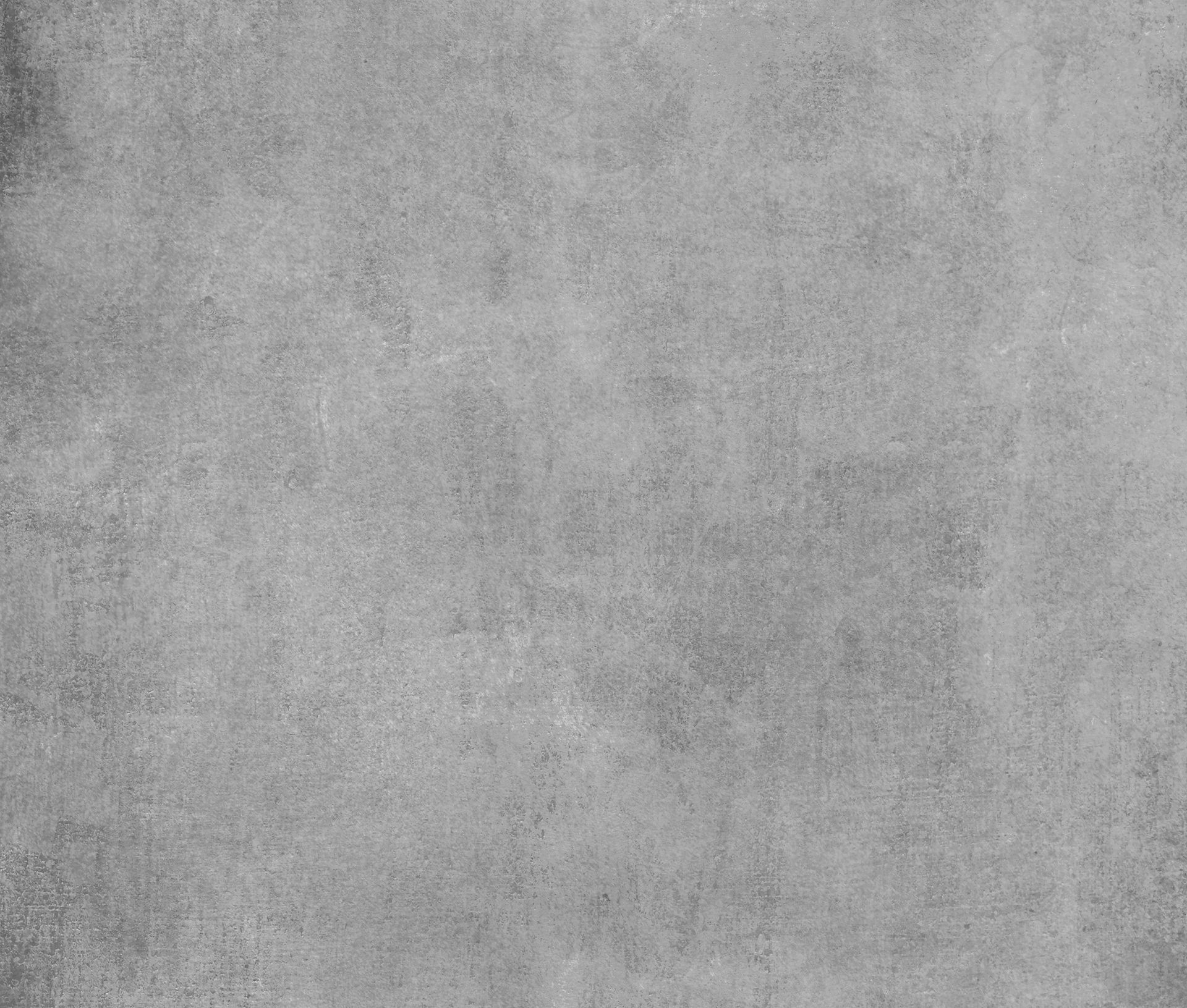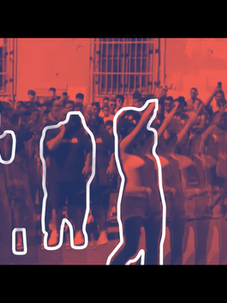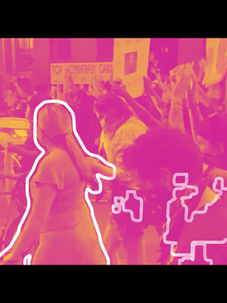
Project: Body’s Boundaries
The project Body’s Boundaries began with research into the Netherlands’ increasingly restrictive immigration policies. As an immigrant myself living in this society, I sought to visually explore the reconstruction of identity, the conflicts I encounter, and the redefinition of boundaries that arise in this context.
Body’s Boundaries
The project Body’s Boundaries began with research into the Netherlands’ increasingly restrictive immigration policies. As an immigrant myself living in this society, I sought to visually explore the reconstruction of identity, the conflicts I encounter, and the redefinition of boundaries that arise in this context.
At pivotal moments in life, we all experience the transition from the familiar to the unfamiliar. Entering a new society, workplace, or relationship prompts us to reflect on identity and belonging, compelling us to redefine ourselves at the threshold. Philosopher Giorgio Agamben’s concept of the threshold serves as a key philosophical framework for this project. Agamben views the threshold not merely as a dividing line, but as a space of internal conflict between inclusion and exclusion. Just as a migrant renegotiates their identity upon entering a new society, we too, each time we face a threshold, are confronted with questions about where we belong and who we are becoming.
These questions are not only personal—they are communal. An individual entering a new society must navigate the boundary of an existing community, while the community, in turn, must confront and reassess its own boundaries in response to the arrival of the unfamiliar. At this intersection, the work of Maurice Blanchot becomes relevant. In The Unavowable Community, Blanchot rejects the notion of community as a collective of sameness. Instead, he envisions community as a space open to the arrival of the other—marked by absence, rupture, and death. Community, in this sense, can never be complete; it exists precisely through its incompleteness and its ongoing relation to the other—a community of absence.
Blanchot’s thinking suggests that the presence of the immigrant does not threaten the community, but rather compels it to question and reconstruct itself. The boundary of community is exposed through the arrival of the other, and in this exposure, the illusion of sameness is dismantled. The community remains in a state of incompletion, sustained through its relation to alterity. Body’s Boundaries engages with this space of incompletion and tension to reflect on coexistence and conflict, exclusion and hospitality, and the potential for new forms of solidarity.
This project comprises four works:
-
Drawing: Trace of Migration
-
Video: Body’s Boundaries
-
Painting Series: Threshold
-
Performance: Being in the Code
It began with drawing and writing as a way of reflecting on identity and borders from a migrant’s perspective. This reflection then expanded into a video work that deconstructs media portrayals of migration using collage techniques. The subsequent painting series takes a more philosophical and introspective approach to the boundaries of existence, while the final performance addresses the themes of datafied identity and bodily control. Together, these works go beyond mere visual accumulation to offer a multidimensional exploration of the relationship between individual, society, and system.
몸의 경계
프로젝트 ‘몸의 경계’는 네덜란드의 강화된 이민자 정책에 대한 리서치에서 출발했다. 나 역시 이곳에서 이민자로 살아가며 겪는 정체성의 재구성과, 이 사회에 마주하는 갈등과 경계의 재정립을 시각적으로 탐구하고자 했다.
우리는 누구나 인생의 전환점마다 익숙함을 떠나 낯선 공간에 진입하는 순간을 경험한다. 새로운 사회, 직장, 관계 속에서 우리는 정체성과 소속감을 고민하며, 그 경계에 서서 자신을 다시 정의하게 된다. 철학자 조르지오 아감벤의 ‘문턱(threshold)’ 개념은 이 프로젝트의 중요한 철학적 배경이 된다. 아감벤은 문턱을 단순한 경계가 아니라, 포함과 배제 사이의 내적 갈등이 일어나는 공간으로 보았다. 이민자가 새로운 사회로 진입하며 정체성의 경계를 다시 설정하게 되는 것처럼, 우리 역시 문턱에 설 때마다 자신이 어디에 속하는지, 어떤 존재로 남을지를 끊임없이 질문하게 된다.
이러한 질문은 개인의 문제이자, 동시에 공동체의 문제다. 새로운 사회로 진입하는 개인은 기존 공동체의 경계를 통과하며 소속되기를 요청받고, 반대로 공동체는 낯선 존재의 등장을 통해 스스로의 경계를 점검하게 된다. 이 지점에서 우리는 모리스 블랑쇼의 공동체 개념과 만나게 된다. 블랑쇼는 『불가능한 공동체(la communauté inavouable)』에서 공동체를 동일성의 결집으로 보지 않았다. 오히려 그는 공동체를 타자의 도래, 부재, 상처, 죽음을 수용하는 열린 가능성의 공간으로 보았다. 즉 공동체란 완성될 수 없으며, 오히려 그 불완전성 속에서 타자와의 관계를 지속함으로써 존재하는 ‘부재의 공동체’다.
이러한 블랑쇼의 사유는 이민자의 존재가 공동체를 위협하는 것이 아니라, 공동체를 다시 묻게 하고 재구성하도록 촉발하는 존재임을 시사한다. 공동체는 타자의 등장에 의해 경계를 드러내고, 그 안에서 동일성의 허상을 해체하며, 미완의 상태로 머무르게 된다. ‘몸의 경계’는 바로 이 미완성과 긴장 속에서 발생하는 공존과 충돌, 배제와 환대, 그리고 새로운 연대의 가능성을 함께 사유하고자 한다.
이 프로젝트는 네 개의 작업으로 구성되어 있다: “드로잉: 이동의 흔적”, “영상: 몸의 경계”, “회화 시리즈: 문턱”, “퍼포먼스: 코드 속의 존재”.
처음에는 드로잉과 글쓰기를 통해 이민자의 정체성과 경계 문제를 사유하는 데 집중했고, 이후 그 사유는 대중매체 속 이민자 관련 뉴스와 작가의 시선을 미디어 콜라주 방식으로 재구성한 영상 작업으로 확장되었다. 이어지는 회화 시리즈는 존재의 경계를 철학적이고 내면적으로 풀어내는 시도이며, 마지막의 퍼포먼스는 데이터화된 정체성과 신체의 통제를 주제로 한다. 이를 통해 프로젝트는 단순한 이미지의 축적을 넘어, 존재와 사회, 시스템 사이의 관계를 입체적으로 고찰하는 작업으로 확장되었다.

Drawing: Trace of Migration
This work emerged from research on Dutch immigration policies and the reconstruction of identity. Through lines, abstract forms, and data-like symbols, it visualizes the shifting boundaries and existential uncertainty experienced by migrants. Elements of repetition, fragmentation, and blurring symbolize bodies and identities that are deconstructed and redefined within digital systems.
드로잉: 이동의 흔적
이 작업은 네덜란드의 이민자 정책과 정체성 재구성에 대한 리서치 과정에서 도출되었다. 선, 추상 형태, 데이터적 기호를 통해 이민자가 경험하는 경계의 이동성과 존재의 불확실성을 시각화한다. 반복과 분절, 흐림의 요소들은 디지털 시스템 속에서 분해되고 재정의되는 신체와 정체성을 상징한다.
Video: Body’s Boundaries
00:02:46 | 30FPS | 1920 x 1078 | 269MB
This video is a media collage that reinterprets news and media coverage of refugees and migrants through the artist’s perspective. By deconstructing and re-editing the recurring images presented by mass media, the artist critically reveals how these individuals are treated as datafied beings within society. The video begins with scenes of physical movement, but the human presence is soon reduced to numbers and information, becoming subjects of control within a system. This symbolizes the alienation of humanity and the reinforcement of social boundaries, prompting viewers to reconsider the mediated reality constructed by the media.
영상: 몸의 경계
00:02:46 | 30FPS | 1920 x 1078 | 269MB
이 영상은 뉴스와 미디어 속 난민·이민자 관련 보도를 작가의 시선으로 재구성한 미디어 콜라주 작업이다. 작가는 대중 매체가 반복적으로 보여주는 이미지들을 해체하고 편집함으로써, 이들이 사회 속에서 어떻게 데이터화된 존재로 다뤄지는지를 비판적으로 드러낸다. 영상은 신체적 이동으로 시작하지만, 곧 존재는 숫자와 정보로 환원되며 시스템 속 관리 대상이 된다. 이는 인간성을 소외시키고 사회적 경계를 고정화하는 과정을 상징하며, 매체가 구성한 현실을 다시 사유하게 만든다.
Narration
Refugees run.
Through the burning streets of the city, wrapped in veils of smoke, accompanied by the sharp sound of gunfire. Their presence drifts like shadows through the ruins. Alongside their flight, anxious glances and murmurs of discontent intertwine. This place is no longer a safe home—no longer capable of holding their bodies. They are not moving by choice, but are being pushed forward by forces beyond their control. Yet even in the new land they reach, boundaries have already been drawn.
Now, their bodies are converted into data.
Their lives, memories, and pain are reduced to numbers and code. What dreams they have, what fears they hold—we cannot know. Their identities are compressed into unrecognizable zeroes and ones. All we encounter are numbers and statistics. The pain of an individual loses its way within the data, and in that process, their unique experiences vanish within the system. Their stories are translated into a language that systems can understand, leaving only distorted shadows of reality behind.
On the other side of this boundary stand the existing residents.
They too feel fear amid change and unfamiliarity. Anxiety grows toward the presence of newcomers, and they fear cracks forming in the life they’ve built. Small conflicts accumulate across the city—in the public squares, in the narrow alleyways—until they erupt in tangled emotions. Their fear is not only of the others but of the uncertainty now invading their own space. Their lives, too, are being recorded, observed; and the boundary grows deeper, more defined.
Bodies as data. Lives bound by systems.
Their existence is monitored behind transparent walls. The system traces them perfectly, but that very transparency grants anonymity. Their names and faces fade, leaving behind only numbers and records. Under the guise of efficiency, they become flowing codes within the system. And those of us observing them—we, too, become data. Regardless of boundary or relation, we are absorbed into the same system. Our bodies and minds increasingly depend on digital flows, often without our own awareness.
Yet still, the questions remain:
What are we really seeing?
What lies beneath the surface of those numbers and statistics? In this digitized reality, where exactly is the boundary—and where does a new identity begin? What kind of future is being built by these systems? We analyze and seek to understand everything under the name of safety, but what have we lost in the process? As this mechanism reduces human life into numbers and code, where is our gaze directed—and at the end of that gaze, what will we find?
나레이션
“난민들이 달린다. 불타는 도시의 거리, 그들을 감싸는 연기의 장막, 그리고 날카로운 총성. 그들의 존재는 붕괴된 도시에서 마치 그림자처럼 자리를 옮긴다. 달리는 그들 곁으로, 불안한 시선과 불만의 속삭임이 엉켜 있다. 이곳은 더 이상 그들의 몸을 담아 줄 수 있는 안전한 ‘집’이 아니다. 그들은 스스로 선택한 것이 아닌, 타의에 의해 떠밀려온 길 위에서 단지 움직이고 있을 뿐이다. 그러나 그들이 도착한 새로운 곳에도 이미 경계선이 드리워져 있다.
이제 그들의 몸은 데이터로 변환된다. 그들의 삶, 기억, 고통은 수치와 코드의 형태로 축소된다. 그들이 어떤 꿈을 꾸고 어떤 두려움을 품고 있는지는 알 수 없다. 이제 그들의 정체성은 인식 불가능한 0과 1로 압축된다. 우리가 접하는 것은 그들의 숫자와 통계뿐이다. 한 인간의 고통이 데이터 속에서 길을 잃고, 그 과정에서 그들의 고유한 경험은 시스템 속에서 소멸된다. 그들에 대한 이야기는 시스템이 이해하기 쉬운 언어로 번역되고, 결국 현실 속 경험은 왜곡된 그림자로 남는다.
반면, 기존 주민들은 그 경계의 반대편에 서 있다. 그들 역시 변화와 낯섦 속에서 두려움을 느낀다. 이방인들이 다가오는 공간에 대한 불안이 커지고, 그들이 쌓아온 삶에 균열이 생길 것을 경계한다. 도시의 곳곳에서 작은 충돌이 쌓이고, 시청 앞 광장과 좁은 골목길에서 복잡한 감정이 폭발한다. 그들의 불안은 단순히 ‘타자’로서의 이방인이 아닌, ‘자기 자신’의 공간에 대한 불확실성에 기인한다. 그들의 삶 또한 어디선가 기록되고 관찰되며 그 경계는 점점 더 깊게 선명해진다.
데이터화된 몸, 시스템에 속박된 존재. 그들의 삶은 마치 투명한 벽 뒤에서 관찰된다. 시스템은 그들을 완벽히 추적하지만, 그 투명성은 오히려 익명성을 부여한다. 그들의 이름과 얼굴은 사라지고, 남은 것은 숫자와 기록뿐이다. 그들은 시스템의 효율성 아래서 익명으로 흘러가는 코드에 불과하다. 그런 그들을 바라보는 우리 자신도 어느새 하나의 데이터가 되어, 경계와 관계없이 시스템 속에 편입되어 간다. 우리의 몸과 정신 또한 스스로가 알지 못하는 사이에 디지털 흐름에 의존하게 된다.
하지만 그 속에서도 질문이 남는다. 우리는 무엇을 보고 있는가? 그 숫자와 통계의 표면 아래 숨겨진 진짜 현실은 무엇인가? 디지털화된 현실 속에서, 어디까지가 경계이며 어디부터가 새로운 정체성인가? 이 모든 시스템이 구축하는 미래는 어떤 모습일 것인가? 우리는 모든 것을 ‘안전’이라는 이름 아래 분석하고 이해하려 하지만, 그 과정에서 우리가 잃어버린 것은 무엇일까? 인간의 삶을 단지 수치와 코드로 변환하는 이 메커니즘 속에서, 우리의 시선은 어디로 향하고 있으며, 그 끝에서 우리는 무엇을 발견하게 될까?
Painting Series: Threshold
Threshold is a painting series that visualizes the existential anxiety and identity reconstruction of individuals standing at the boundary. This body of work presents the “threshold”—a symbolic space between familiarity and strangeness, inside and outside—as a place of ambiguity and transition.
An existence at the threshold grapples with belonging and choice, departure and stillness, ultimately redefining itself. The series draws on the philosophical foundations of Sartre’s notions of freedom and responsibility, Heidegger’s concept of anxiety, and Agamben’s idea of the “threshold being.”
In these works, the door is not merely an entrance, but a site of inner conflict faced by anyone confronting change. As we enter new societies, relationships, or phases of life, we all find ourselves on a threshold. This series poses a visual inquiry into the tremors, choices, and essence of the human condition in such moments of transition.
회화 시리즈: 문턱
《문턱》은 경계에 선 인간의 실존적 불안과 정체성의 재구성을 시각화한 회화 시리즈이다. 이 작업은 익숙함과 낯섦 사이, 안과 밖의 모호한 공간인 ‘문턱’을 상징적 장소로 제시한다.
문턱에 선 존재는 소속과 선택, 떠남과 머묾 사이에서 갈등하며 스스로를 다시 정의하게 된다. 사르트르의 자유와 책임, 하이데거의 불안 개념, 그리고 아감벤의 ‘문턱적 존재’는 이 시리즈의 철학적 기반이 된다.
작품 속 문은 단순한 입구가 아니라, 변화 앞에 선 모든 이들이 마주하는 내적 갈등의 장소이다. 새로운 사회, 관계, 삶의 국면에 진입하며 우리는 누구나 문턱에 선다. 이 작업은 그 순간의 흔들림과 선택, 그리고 다시 나아가려는 인간의 본질을 시각적으로 묻는다.
Performance: Being in the Code
Duration: approx. 4 minutes
This performance explores how the migrant’s body and identity are reduced to data and dehumanized at the thresholds of a new society. Rooted in Giorgio Agamben’s concept of the threshold, the piece visualizes the alienation and control of existence through bodily movement and visual symbols (projected codes).
Scene Breakdown
#1. The Body at the Threshold
The stage begins in darkness, with low, uneasy ambient sound. A single performer steps into a narrow beam of light. Each step is tense, a mix of fear, unfamiliarity, urgency, and hesitation. The performer stops, looks around, and remains at the edge.
This scene symbolizes the migrant’s first step onto the threshold—a space not merely of passage, but of identity redefinition.
#2. Loss of Identity
As the performer moves to the center, QR codes and barcodes begin to project onto their body. Gradually, these codes cover the performer entirely, making their presence increasingly unrecognizable.
This stage represents how individual identity is reduced and erased within social systems. The performer’s movements shift from organic to mechanical, reflecting the transformation of the body into a “function” rather than an autonomous subject.
#3. The Body Crossing the Threshold
Now marked with data, the performer lowers their head and moves toward the edge of the stage.
As the lighting intensifies, their body becomes fully covered by code patterns, erasing their individuality. Movements, though seemingly resistant, devolve into repetitive, automated rhythms. The performer is no longer a being with purpose, but a purpose-less function within the system.
#4. Anonymity in Data
QR and barcode patterns expand to fill the entire stage. The performer is gradually engulfed by the digital projection and disappears into it—face and body no longer distinguishable.
The audience witnesses the transformation of a human being into a coded function—an existence defined only by its role within the system.
#5. Audience Participation
A QR code remains on stage after the performance. The audience can scan it, connecting to the data projected during the piece. This final gesture invites the viewer to cross the boundary themselves—not just as spectators, but as participants implicated in the system.
Summary
-
Visualizes Agamben’s concepts of the threshold, means without end, and dehumanization
-
Narrative unfolds through light, sound, movement, and projected code
-
The audience transitions from observer to active participant
-
Raises universal questions of existence within systems—not just for migrants, but for all individuals in modern society
-
퍼포먼스: 코드 속의 존재
Duration: 약 4분
이 퍼포먼스는 이민자의 신체와 정체성이 새로운 사회 속에서 데이터로 환원되고, 경계 위에서 비인간화되는 과정을 다룬다. 아감벤의 ‘문턱’ 개념을 바탕으로, 존재의 소외와 통제를 **신체 움직임과 시각적 기호(코드 투영)**로 표현한다.
장면 구성
#1. 문턱에 선 몸
무대는 어둠 속에서 시작되고, 낮고 불안한 음향이 흐른다. 한 명의 퍼포머가 빛 한 줄기 속으로 걸어 들어온다. 그 발걸음은 두려움과 낯섦, 조급함과 머뭇거림이 교차하는 긴장감 속에 있다. 퍼포머는 걸음을 멈추고 시선을 돌리며 경계에 머무른다. 이 장면은 ‘문턱’에 선 이민자의 첫 걸음을 상징한다. 문턱은 단순한 통과 지점이 아닌, 정체성이 재정의되는 경계 공간이다.
#2. 정체성의 상실
퍼포머가 중앙에 서면, QR 코드와 바코드가 그의 몸에 투영된다. 코드는 점차 퍼포머의 신체를 덮어가며, 관객은 점점 그 사람의 ‘존재’를 인식할 수 없게 된다. 이 장면은 개인의 정체성이 사회 시스템 속에서 데이터로 축소되고 지워지는 현실을 상징한다. 퍼포머의 움직임은 점차 기계적으로 바뀌며, 신체는 더 이상 자율적인 주체가 아닌 ‘기능’으로 환원된다.
#3. 문턱을 넘는 몸
코드를 각인한 퍼포머는 고개를 숙인 채 무대 끝으로 이동한다.
조명이 점차 밝아지며, 신체는 코드 패턴으로 완전히 뒤덮이고 개별성은 사라진다.
퍼포머는 저항하는 듯 움직이지만, 동작은 점점 반복적이고 기계화된 리듬으로 변한다.
그는 더 이상 ‘자기 목적’을 가진 존재가 아니라, 시스템 속에서 기능하는 수단 없는 목적으로 전락한다.
#4. 데이터화된 무명성
무대 전체에 QR 코드와 바코드 패턴이 확장된다. 퍼포머는 그 속에 묻히며 천천히 사라진다. 그는 얼굴도, 신체도 식별되지 않는 무명성 속으로 소멸하고, 관객은 인간 존재가 어떻게 코드화되어 ‘경계 속 기능’으로만 남는지를 목격하게 된다.
#5. 관객 참여
무대 위에 남겨진 QR 코드는 관객이 스캔할 수 있도록 남는다. 이 코드는 퍼포먼스에 투영되었던 데이터와 연결되어, 관객 스스로가 그 경계를 넘는 경험을 하도록 유도한다.
요약
-
퍼포먼스는 아감벤의 문턱, 수단 없는 목적, 비인간화 개념을 시각화
-
조명, 사운드, 신체 움직임, 코드 투영 등으로 서사 전개
-
관객은 단지 관찰자가 아닌, 마지막에 체험자로서 참여
-
이민자만의 이야기가 아닌, 현대 사회 속 존재의 보편적 질문을 던짐
Watch Performance
















